Bruce Kulick on New Solo Album and KISS
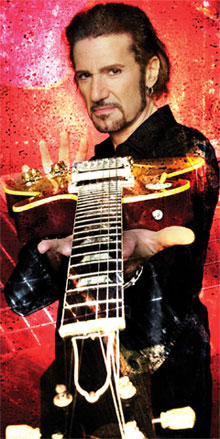 On: BK3, Not Being in KISS, His Favorite Rig
On: BK3, Not Being in KISS, His Favorite Rig
You’d have to be newly arrived from Jupiter – with no Internet connection – not to know that Bruce Kulick was KISS’s lead guitarist during the shreddy (and then grungy) ’80s and early ’90s.
But you might not know this:
> He was in KISS longer than Ace Frehley.
> Before joining KISS, he played guitar for Meat Loaf on the Bat Out of Hell tour, then formed the band Blackjack with Michael Bolton (of later crooning fame), then played on Billy Squier’s debut album The Tale of the Tape – and is the current axeman for Grand Funk Railroad.
And the guy can flat play. Not just play, but play. As a long-time classic KISS fan, I feel that much of the ’80s KISS doesn’t do Bruce justice. He recently told Guitar Player magazine that Paul Stanley was “very specific that my playing be completely modern – which at the time meant Floyd Rose whammy things and finger-tapping….”
Not that it was all that way for him in KISS, but you get the picture. For a better picture of what I would call the “real” Bruce Kulick, check out his work with Union, the band he founded with John Corabi in the late ’90s. Some people call that band ahead of its time. Whatever the reason, it never caught fire – but sure enough, Union’s music still sounds fresh and musically is very good.
Also check out his three solo albums, the latest of which – appropriately titled BK3 – was the reason for our brief interview. If it matters, my impression of Bruce is that he’s down to Earth, nice and a huge gear-head – which means he’s a guy any guitar-slinger and tone fan would love to have a conversation with.
A full review of BK3 will be posted later this week.
WoodyTone: As a guitar player, I really enjoyed the album. The first thing I have to talk about is the guitar solo on “Hand of the King.” It’s one of the best solos I’ve heard in a while – very tasteful, and especially the way it builds in the beginning with the harmonies. Let’s start there – how did you get inspired to build into the solo that way? It’s really unconventional.
Bruce: I have to admit that my producer, Jeremy [Rubolino], really pushed me. He pushes me like that all the time. He has a real ear for composing for strings and stuff, and that makes it a little different approach. He loves my instinct for playing, so we can be really creative together. I do my thing, what I’m hearing, perfect it and get it down right. Then we take a look at it and [at times] try these harmony notes on it. So a lot of the harmony things on all of the records – it’s not my natural thing to do. That contribution is his. He’s hearing things a little different, and I thought it made for very creative guitar parts.
Also, one of my influences I don’t always talk about is Leslie West. I loved the lyrical tone he got out of his Les Paul Junior, and I was going for that on this song. [Bruce also used a Junior for a lot of KISS studio work.]
I was really impressed by what I’d call classic-type solos – like in “Hand…” and “Final Mile.” It’s tasty, not shredding, even though your fingers can move fast. Lots of guys with your kind of speed can’t restrain themselves in that way. How do you do it?
Players like Brian May, Eddie Van Halen and Eric Clapton, they all have a wonderful vocabulary for you to use. I know I don’t sound like any of them, but when I approach a solo, if [the song] sounds like something Brian May would really dig into, I’ll go for a midrangy tone, maybe a Vox-like amp [and approach the solo similarly]. I like to do things like that.
I also love gear. The singer in Grand Funk plays guitar, and he says there’s a song in every guitar. You will get a song out of it, but in a way I think you get a solo out of it too.
“I’m the Animal” is the only song with what I’ll call shredding. Maybe “Between the Lines” [with Steve Lukather] too.
I’m not a shredder. I think when I’m playing that fast, that’s as fast as as I [can] play – because there are techniques I haven’t really mastered, like sweep-picking and stuff like that. I play what I like to play, and I feel very fortunate that I can do what I can do. It’s what you’re communicating, not how fast it is.
There are a lot of cool riffs in the tunes, like the break in “I’ll Survive.” I was actually surprised that that’s one of my favorites on the album, along with “Life” [both are slower, softer tunes]. I finally realized why: Your vocals make those tracks. Somehow they sound soulful to me. They’re not ‘oversung,’ if you know what I mean.
Quite a few fans are pleased that I’m singing in way they haven’t heard me sing before. But I have to say I’m my worst critic, and voice is not my main instrument. So I give credit to my whole team too. I had an amazing engineer, and it was his idea to use triple-tracking and phasing on the voice.
I can’t sing like George Harrison, but I was hoping to be as casual as he and Beatles were [in their singing].
What inspired that interesting BTO/Jethro Tull outro in “Life?”
When I wrote that song, I really felt like I wanted the ending to have a celebration vibe to it. I wanted the tempo to change. I played the ukelele, Jeremy played the flute, we had a violin player…. Jeremy knows how to lead an orchestra, but I don’t, so Jeremy said, ‘Just tell [the violin player] what you want him to do.’ It was fun to lead him through it.
We had a bike whistle, a bike horn – we made a collage of sounds. The keyboard player in Grand Funk is a really good percussionist, so I sent him the track and he used all these percussion instruments in his home studio.
It was an interesting way to end the record for sure. Not very typical for a rocker guitar-player.
To me, your voice has a similar sort of trail-off on the notes as Ace Frehley does. That, your experience in KISS, your playing style all makes me think you’d be great in the current KISS too. Are you bummed out at all that you’re not in the current band?
I miss playing with the guys, no doubt, but the truth is, I think Tommy does a great job being the Ace that they need. He filled in because it was getting a little weird with Ace, whether he was going to be in the band or not, so Tommy had to suit up and be ready.
It was pretty natural for them to go to Tommy because quite honestly, I’d have to not be Bruce Kulick. Tommy does what they’re looking for. I’d like my years [in KISS] to stay intact for what they are.
Talk to me about your favorite Les Paul. What’s the story behind that?
It’s been in the family a long time. My brother [producer and axeman Bob Kulick] bought it back in the ’70s. It had a terrible sunburst finish, but it’s an original ’53 Gold Top. It would’ve had a trapeze bridge. A double-white PAF came with it, and it had some nickel hardware already from the late ’50s. The neck was reset before my brother bought it.
So it’s a conversion guitar. It’s really friendly, the right weight, a magic maple top, the Brazilian rosewood [fingerboard].
At one point my brother got into other kinds of guitars and didn’t want it anymore. I said, “I’m buying it from you.” I played it on Paul [Stanley’s] solo record, and Paul told me I should have Gibson refinish it. At the time, [aging expert] Tom Murphy was at Gibson. Tom painted that guitar for me.
It’s been a very trusted friend, and I’m proud to be its owner.
What do you describe as your ideal tone? To me your tone on BK3 doesn’t sound real loose, like a plexi. It’s tighter – Marshally but more modern.
I usually use a Marshall 900 series [head], but I blend it with other amps too, like a Bassman, a [Orange] Tiny Terror, an Egnater and an AC30.
What’s your desert island rig? One guitar, one amp and one effect.
I’d definitely take my old Les Paul, the Marshall 900 head I used in the KISS days – that’s my go-to Marshall head. I like a 4×12 with V30s [Celestion Vintage 30s], and I’d probably take the SD-1 overdrive pedal [Boss Super Overdrive]. [Pedal-modder Robert] Keeley got me a modified one that sounds killer.
Notable
> BK3 is slated for release on Groundhog Day, Feb. 2, 2010.
> In case there’s any doubt Bruce is a gear-head like any other guit-slinger, check out his truly excellent studio blog for BK3. He probably doesn’t even mention all the gear, but it’s an amazing list nonetheless. I’m particularly digging the ’79 Ibanez PS10 and the ’80s BC Rich koa Mockingbird!
Category: Bruce Kulick, Keeley, Les Paul, Marshall

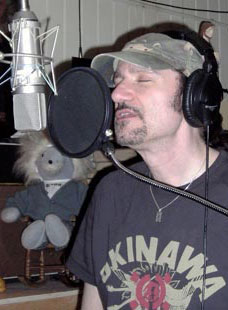
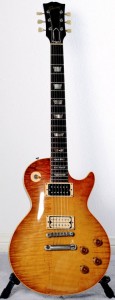




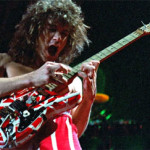
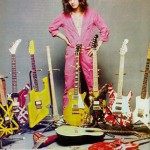
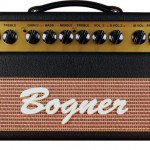
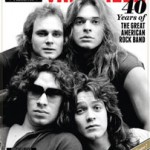
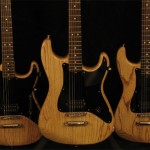
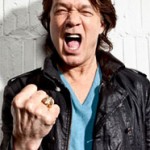
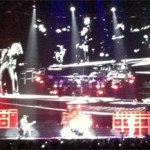
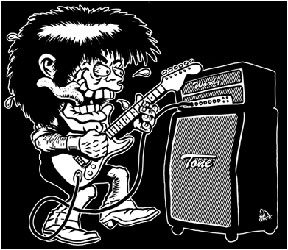

Comments (1)
Trackback URL | Comments RSS Feed
Sites That Link to this Post